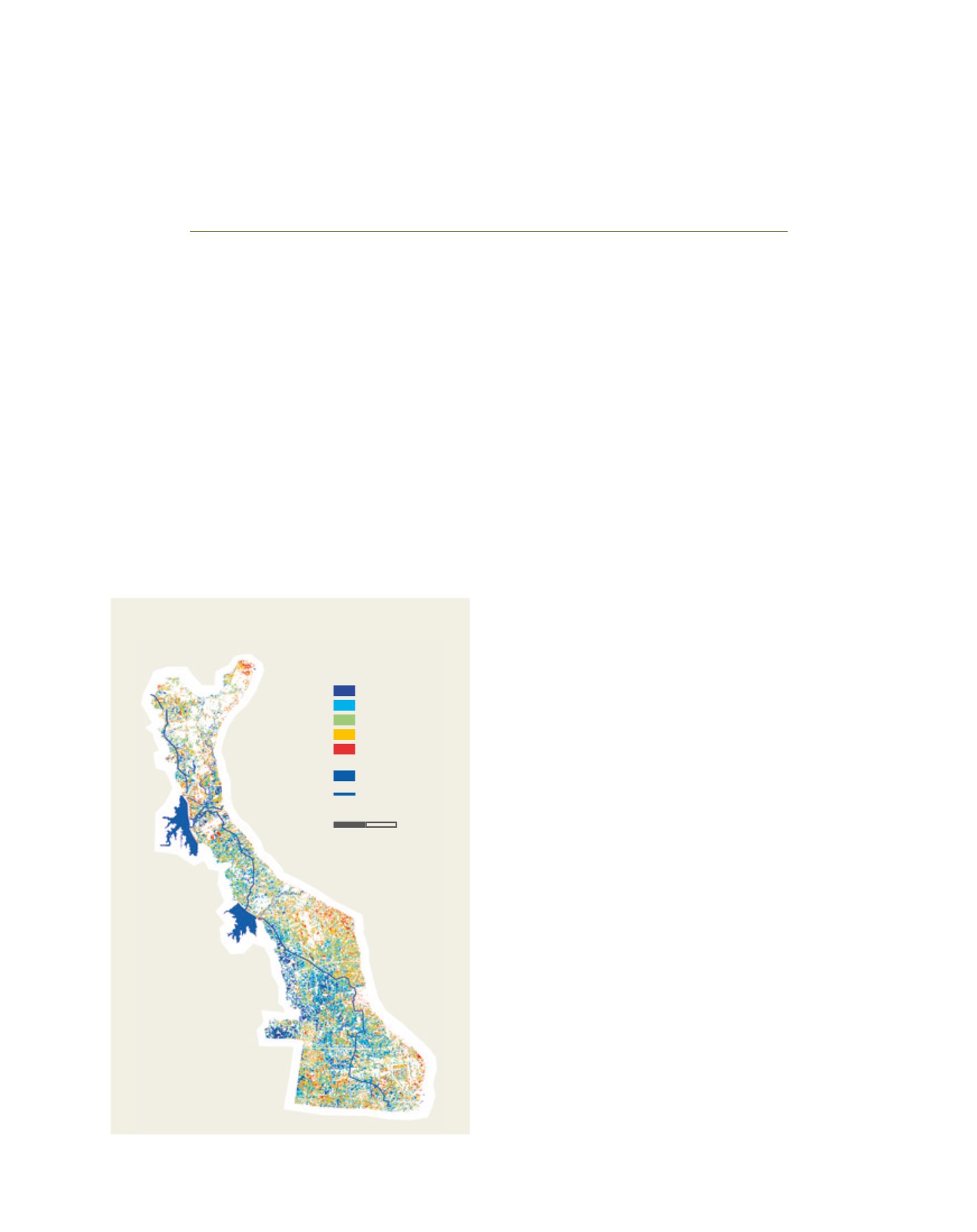

[
] 26
A B
et ter
W
or ld
New approaches to irrigation – measuring water
use productivity using remote sensing
Yasmin Siddiqi, Principal Water Resources Specialist, Asian Development Bank; Wim Bastiaanssen, Professor in
Global Water Accounting, IHE Delft, the UNESCO Institute for Water Education; Xueliang Cai, Senior Analyst
Water Productivity, IHE Delft, the UNESCO Institute for Water Education
W
ater resources are becoming increasingly scarce
in the Asia Pacific region. Rapid population
growth – a predicted population of 5.2 billion by
2050 – will place increasing demands on finite resources.
1
About 80% of water is currently used by agriculture and, as
the region urbanises, there will be more demand for usage
in homes (including drinking), food production, and energy
for homes and industries. By 2050, it is estimated that agri-
culture will need to produce 60% more food globally, and
developing countries will have to double their food produc-
tion to feed growing populations.
2
Climate change will exacerbate these circumstances, with
increased variability in rainfall, temperature and the availabil-
ity of water resources already evident across Asia. The recent,
prolonged El Niño drought in South East Asia, placed further
pressures on already scarce water resources in countries such
as Cambodia and Viet Nam. The frequency and intensity of El
Niños is expected to increase during this century, aggravated
by higher temperatures and extreme weather due to climate
change, further limiting water availability.
3
By 2050, urban and industrial water demand will increase
from 20% to 40% of the total regional demand. Water for use
in irrigation (now about 80% of the total) must become more
productive to meet future demands of other users.
4
The advent of the post-2015 development agenda and the
Sustainable Development Goal dedicated to water provides
a platform and global focus for sustainable water manage-
ment and sanitation. Target 6.4 for increasing water use
efficiency across all sectors by 2030 is particularly relevant
in the context of irrigated agriculture where the bulk of water
resources are utilised but with low productivity.
5
Water use efficiency and productivity
Estimates of irrigation system losses in Asia are up to 60%.
6
This is due to dilapidated irrigation infrastructure, weak
management practices and a lack of incentives for water
saving through pricing. Traditionally, irrigation performance
has been based on system efficiencies, such as conveyance
and field application and agricultural yield in terms of tons of
crop produced per hectare. Measuring efficiency is a practical
challenge as it is typically academic and research-based, and
not a common undertaking for an irrigation agency. More
commonly, irrigation system measurements are based on
bulk diversions from the source, for instance water diverted
from a river at a canal headworks and from a main canal to
the distribution canal.
Recent technological advances in earth observation and
remote sensing have introduced greater possibilities as to
what measurements can be achieved. Traditional water
productivity (WP) assessment focuses on consumed water,
but irrigation systems, from source to plant, comprise a
number of water conveyance and loss processes, like those
of evaporation, deep percolation and water leakages from the
canal. These may be exacerbated by poor on-farm land and
Fig. 1: Water use in mango production, Khanh Hoa
Province, Viet Nam
Suoi Dau
Reservoir
Cam Ranh
Reservoir
0 1 2 4 km
Main canals
Water bodies
Water use in kg/m
3
3.2 – 6.0
2.8 – 3.1
2.4 – 2.7
2.0 – 2.3
0.3 – 1.9
Source: Asian Development Bank, 2017
















